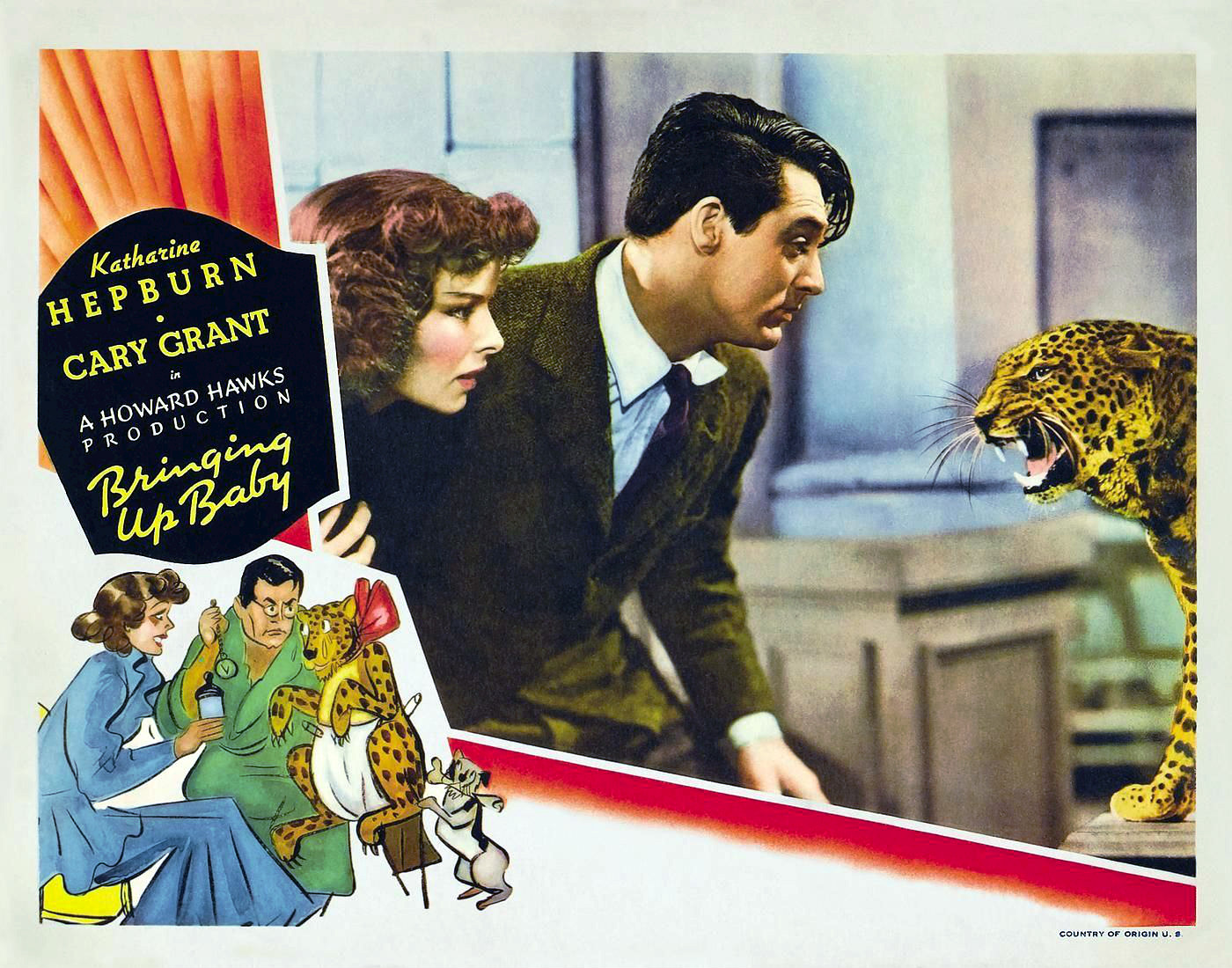Although it's often called the greatest of all screwball comedies, to my mind
Bringing Up Baby transcends that label: It's the finest example I know of a
nonsense comedy. Screwball comedies like
My Man Godfrey (Gregory La Cava, 1936) and
Nothing Sacred (William A. Wellman, 1937) usually have one foot in the real world -- the Depression and its Hoovervilles in the case of the former, exploitation journalism in the latter.
Bringing Up Baby exists only in a universe where an impossible thing like an "intercostal clavicle"* could exist. Its world is a place where nobody listens to anyone else and everyone seems to be marching to their own drummer. It's what puts
Bringing Up Baby in the sublime company of Lewis Carroll's works or James Joyce's
Finnegans Wake. Fortunately it's more accessible than the latter and at least as much fun as the former. Nonsense is harder to bring off on film than in literature. Cinema by nature is a documentary medium -- one that's assumed to be recording reality -- and has less flexibility than words do. It's also a collaborative medium, which means that everyone involved in writing, directing, and acting in it has to be on the same wave length, or the whole thing will collapse like a soufflé with too many cooks. That's why
Bringing Up Baby is almost
sui generis: The only other movies that approach the sublimity of its nonsense are some of the ones with the Marx Brothers or W.C. Fields. Even Howard Hawks once admitted that he thought he had gone too far in crafting a comedy with "no normal people in it." Nevertheless, the soufflé continues to rise, thanks in very large part to Katharine Hepburn and Cary Grant, whose four movies together -- the other three were directed by George Cukor:
Sylvia Scarlett (1935),
Holiday (1938), and
The Philadelphia Story (1940) -- seem to me to demonstrate a more potent teaming than the more iconic one of Hepburn with Spencer Tracy. And then there's the
sine qua non of the screwball comedy, a supporting cast of character players like Charles Ruggles, Walter Catlett, Barry Fitzgerald, May Robson, and Fritz Feld. The screenplay was put together by Dudley Nichols and Hagar Wilde, from a magazine story by Wilde that Hawks bought and then with their help -- and doubtless much ad-libbing from the cast -- revised out of all recognition. I only hope that whoever came up with the phrase "intercostal clavicle," which Grant delivers with such delight in its rhythms, received a bonus.
*In case you've never thought to look it up, "intercostal" means "between the ribs" and usually refers to the muscles and spaces in the ribcage. The clavicle, or collarbone, sits atop the ribs and therefore can't be between them.
















